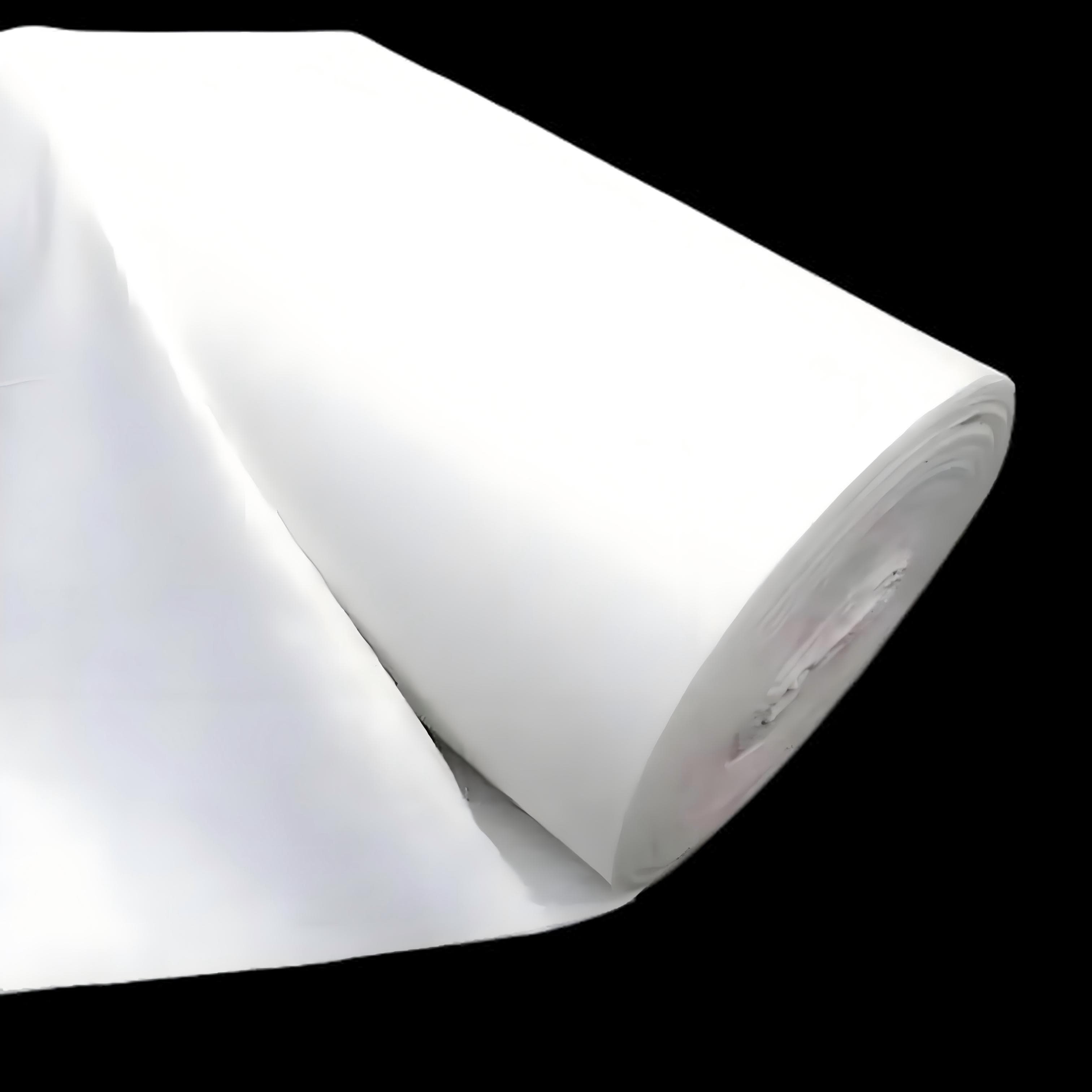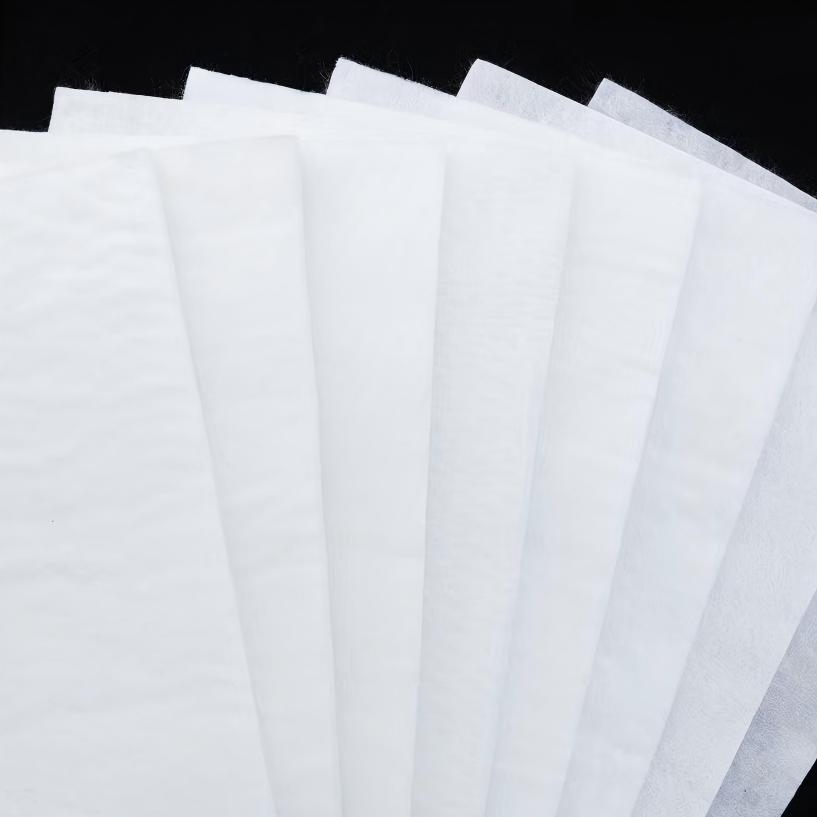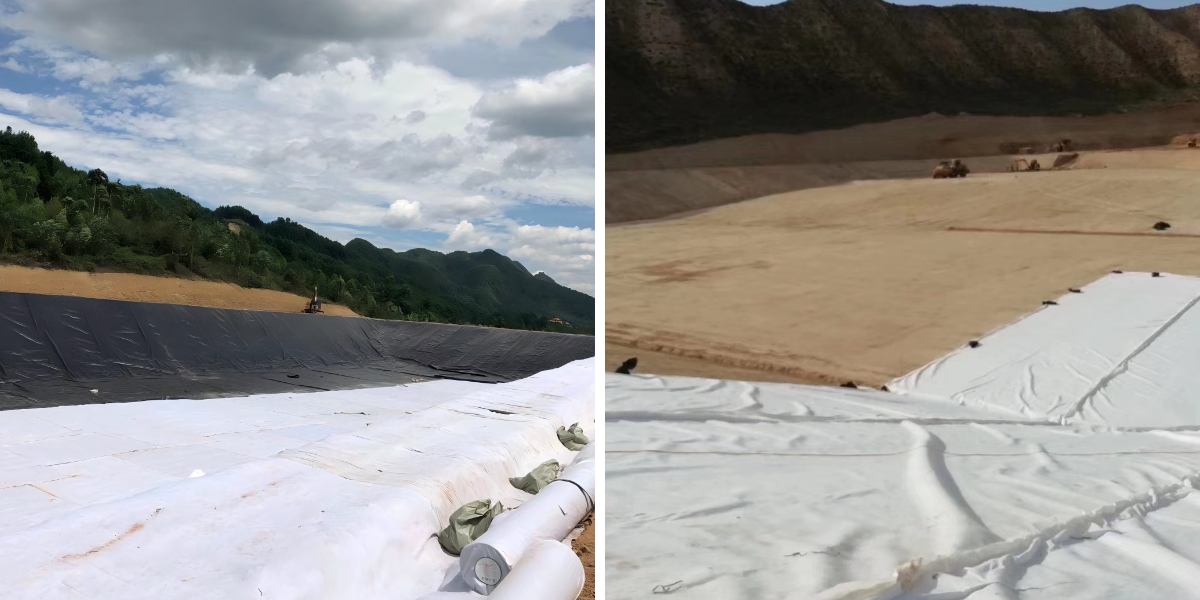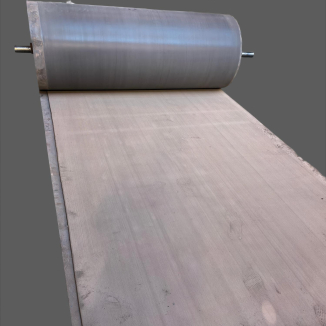Geotextiles Soil Erosion Control
1. Soil consolidation and erosion prevention: closely adhere to the surface, intercept soil particles, resist rainwater erosion and wind erosion, and reduce soil erosion.
2. Promoting growth and protecting the surface: providing a substrate for vegetation attachment, cooperating with plant roots to form a composite protection, and enhancing long-term anti-corrosion effect.
3. Permeable moisture regulation: to divert surface runoff and soil seepage, avoid water accumulation softening the soil, and maintain the stability of the slope structure.
4. Weather resistant adaptation: resistant to ultraviolet radiation and biological corrosion, suitable for various terrains such as slopes and rivers, easy to construct and maintain.
Products Introduction:
Geotextiles Soil Erosion Control is a type of functional geosynthetic material designed specifically to prevent soil erosion. It is made from polymer fibers such as polyester (PET) and polypropylene (PP), and is processed through needle punched non-woven, machine woven, or three-dimensional weaving techniques. The core principle is to form a protective system of "physical barrier+ecological synergy" by laying it on the surface of the soil or embedding it inside the soil. It can directly resist external forces such as rainwater erosion and wind erosion, and provide a carrier for vegetation growth. With the help of plant roots, it can further enhance soil adhesion and achieve the dual goals of "short-term protection and long-term ecological restoration". This product is suitable for scenarios such as slopes, rivers, and mines that are prone to soil erosion. Compared to traditional hard protections such as sandbags and masonry, it has the advantages of flexible adaptation, ecological compatibility, and controllable cost. It is the core material of modern soil and water conservation engineering.
Product Features:
1. Efficient soil consolidation and strong corrosion resistance: Adopting high-density fiber structure (weight 150-600g/m ²), the fabric surface forms a fine grid or three-dimensional space, which can closely adhere to the soil surface, intercept more than 90% of fine soil particles (such as clay and silt), effectively resist 3-6m/s rainwater runoff erosion and wind erosion above level 5, prevent soil loss due to external forces, and protect the integrity of the surface morphology.
2. Ecological synergy promotes vegetation growth: The material has good breathability and permeability (permeability coefficient ≥ 1 × 10 ⁻ cm/s), which can be directly used as an attachment base for grass and shrub seeds, providing a moist environment for plant germination; In the later stage, the vegetation roots penetrate the fabric and interweave with the soil, forming a composite protective layer of "plant geotextile soil", which improves the anti-corrosion effect by 30% -50% and achieves the transition from "artificial protection" to "natural reinforcement".
3. Flexible adaptation, suitable for complex terrain: The texture is flexible and bendable, and can naturally fit with irregular terrain such as slope gradient (0 ° -60 °) and river shorelines, avoiding local erosion caused by laying gaps; Three dimensional structural products (such as geonet mats) can also form a "water storage microenvironment", reduce surface runoff velocity, and further enhance soil stabilization effect.
4. Weather resistant and durable, with low maintenance costs: After being treated with UV resistance and acid alkali resistance, it can withstand temperature differences of -30 ℃ to 70 ℃ and soil microbial erosion, with an outdoor service life of 5-15 years; After installation, there is no need for frequent replacement, and local damage can be quickly repaired. The long-term maintenance cost is only one-third to one-half of traditional hard protection.
Product Parameters:
project | metric | ||||||||||
Nominal strength/(kN/m) | |||||||||||
6 | 9 | 12 | 18 | 24 | 30 | 36 | 48 | 54 | |||
1 | Longitudinal and transverse tensile strength / (kN/m) ≥ | 6 | 9 | 12 | 18 | 24 | 30 | 36 | 48 | 54 | |
2 | Maximum elongation at maximum load in longitudinal and transverse directions/% | 30~80 | |||||||||
3 | CBR top penetration strength /kN ≥ | 0.9 | 1.6 | 1.9 | 2.9 | 3.9 | 5.3 | 6.4 | 7.9 | 8.5 | |
4 | Longitudinal and transverse tearing strength /kN | 0.15 | 0.22 | 0.29 | 0.43 | 0.57 | 0.71 | 0.83 | 1.1 | 1.25 | |
5 | Equivalent aperture O.90(O95)/mm | 0.05~0.30 | |||||||||
6 | Vertical permeability coefficient/(cm/s) | K× (10-¹~10-), where K=1.0~9.9 | |||||||||
7 | Width deviation rate /% ≥ | -0.5 | |||||||||
8 | Unit area mass deviation rate /% ≥ | -5 | |||||||||
9 | Thickness deviation rate /% ≥ | -10 | |||||||||
10 | Thickness coefficient of variation (CV)/% ≤ | 10 | |||||||||
11 | Dynamic perforation | Puncture hole diameter/mm ≤ | 37 | 33 | 27 | 20 | 17 | 14 | 11 | 9 | 7 |
12 | Longitudinal and transverse fracture strength (grab method)/kN ≥ | 0.3 | 0.5 | 0.7 | 1.1 | 1.4 | 1.9 | 2.4 | 3 | 3.5 | |
13 | Ultraviolet resistance (Xenon arc lamp method) | Longitudinal and transverse strength retention rate% ≥ | 70 | ||||||||
14 | Ultraviolet resistance (fluorescence UV lamp method) | Longitudinal and transverse strength retention rate% ≥ | 80 | ||||||||
Product Applications:
1. Slope protection for highways and railways: In the filling/excavation slopes of highways and railways, a combination of "non-woven geotextile+spray greening" is used to resist soil erosion caused by rainwater erosion and vehicle vibration, while restoring slope vegetation, reducing maintenance frequency, and adapting to rainy and easily eroded road sections such as mountainous areas and hills.
2. Greening of mines and quarries: Used for exposed rock slopes after mining, a basic protective layer is constructed through "three-dimensional geonet cushion+ecological bag", the surface soil is fixed, and pioneer plants (such as alfalfa and seabuckthorn) are planted to gradually restore the slope ecology, prevent gravel sliding and soil erosion, and assist in the ecological restoration and acceptance of mines.
3. River and reservoir bank slope protection: Lay anti erosion geotextile on the upstream slope of the river and reservoir, and plant aquatic plants (such as reeds and calamus) to resist water erosion during flood periods and protect the bank slope from collapse; The permeability of fabrics can maintain the exchange of substances between soil and water on the bank slope, balancing flood control and ecological balance.
4. Agriculture and Landscape Soil and Water Conservation: Lay lightweight non-woven geotextiles on terraced fields and sloping farmland to reduce rainwater erosion and protect the soil in the cultivated layer; Used on landscape slopes in urban parks and golf courses to prevent soil erosion during the early stages of lawn planting and improve vegetation survival rate.
5. Post disaster emergency corrosion prevention: Temporarily lay in the reconstruction area after landslides and mudslides, quickly cover the exposed surface, prevent residual water or rainfall from causing new soil erosion, and buy time for subsequent ecological restoration.
Geotextiles Soil Erosion Control takes "efficient soil consolidation, ecological synergy, flexible adaptation, and long-term durability" as its core advantages, breaking through the limitations of "heavy engineering protection and light ecological restoration" and "high cost and low adaptation" in traditional soil erosion prevention and control. Whether it is the daily protection of highway slopes or the ecological restoration of mining waterways, they can both contain soil erosion in the short term and achieve long-term self-sustaining of the ecosystem through the dual effects of "physical barriers+vegetation synergy". The product combines functionality and sustainability, with convenient construction and adaptability to diverse terrains. It is an ideal choice for balancing "protective effectiveness" and "ecological value" in modern soil and water conservation engineering, providing economically reliable technical support for soil erosion control and ecological environment protection.













